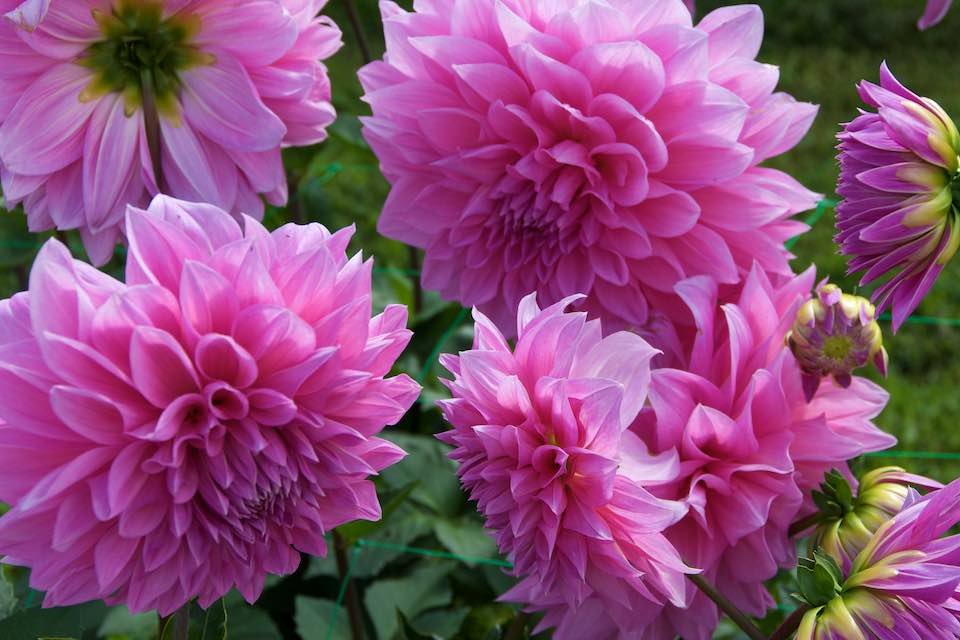I’m a sucker for learning from the pro’s. Tinkering, dabbling, bodging are just not in my armoury. Sad, but unfortunately very true. He probably never thought the daydreaming, distracted child would ever absorb anything, but my father’s resolute ‘If you’re going to do something, do it properly‘ discipline, has eventually left its mark. For the sake of a paternal smug free future, please please please don’t tell him. I’ll never live it down….
On a quest to grow the best possible dahlias on my cutting patch, I went on safari to the wild west that is West Sussex, to meet the dahlia king & queen; Richard and Hazel Ramsey of Withypitts farm. Known for growing the most extraordinary variety and quality dahlia blooms, Withypitts farm supplies the ever-so-smart London wholesale trade at Covent Garden. Every week, the 2 acre farm produces over 2500 stems, grown from around 4000 plants of approximately 150 varieties. Richard and Hazel, are very much a driving force behind the current dahlia revival by not just providing the market with beautiful varieties and colours, but the much required capability to physically bringing such delicate blooms to market. The latter a challenging feat as dahlia’s, especially the larger, plate sized varieties are near impossible to transport.
Banker’s reverie
Dahlias are tricky blighters. Recipe for success; out-of-soil winter coddling, nothing short of ideal weather growing conditions, vigorous staking, copious feed, pinching out, disbudding, stern pest control throughout the season, optimum bloom weather to prevent rain damage, and cutting only when at their most vulnerable – in (70%) full bloom otherwise they’ll refuse to open and just sulk in the vase. And then if you’ve managed all that and found a magical way to ship these delicate, non-squashable creatures without damage, one can only hope that a fashion fad hasn’t turned everyone off the colours you have grown. Hence all the right, risk averse qualities that any bank manager looks for in a business. One can only imagine the expression on said bank manager’s face when he’s informed that we’re talking of monoculture….
Yet, none of this systematic risk deters Richard and Hazel Ramsey, from their love of the mighty dahlia, and growing nothing short of the highest quality blooms for British market. That for me is, and will always be, the magic of the horticultural industry. Despite the seemingly insurmountable risks; flower farmers, nurserymen, plantsmen & women, grow what they love and because they love doing so, the end result is nothing short of the best. Granted, such pockets of expertise will probably never reach the scale required to compete with the likes of the Dutch (associated) flower farmers, but it does lead to an industry of wonderful diversification. You just need to know where to look.
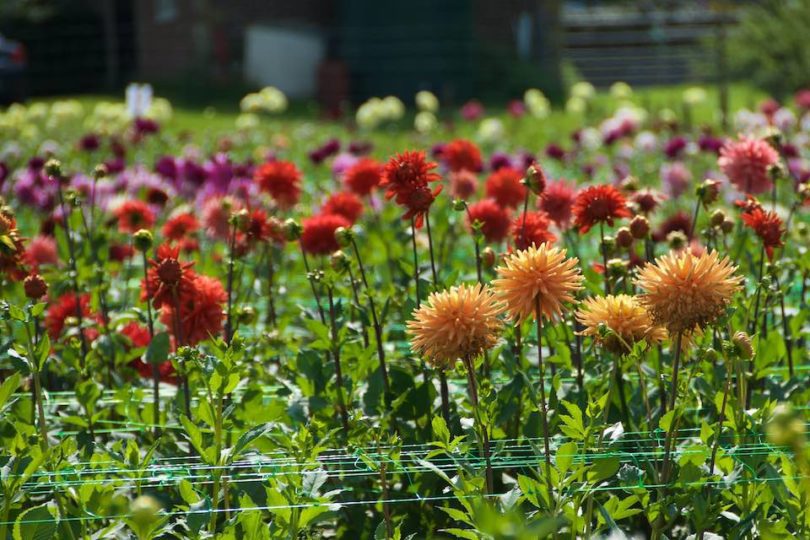
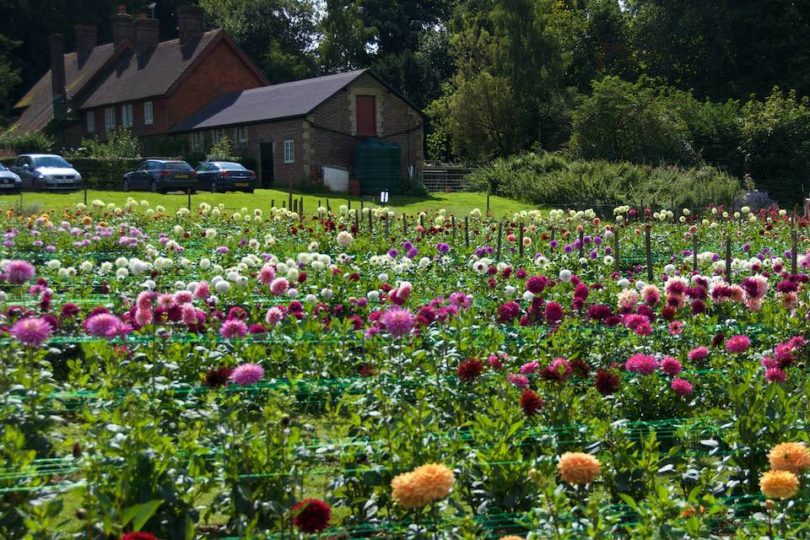
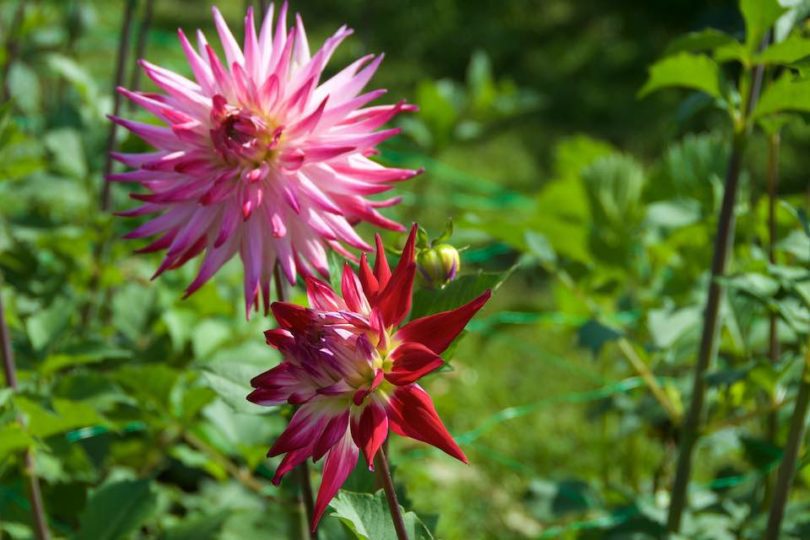
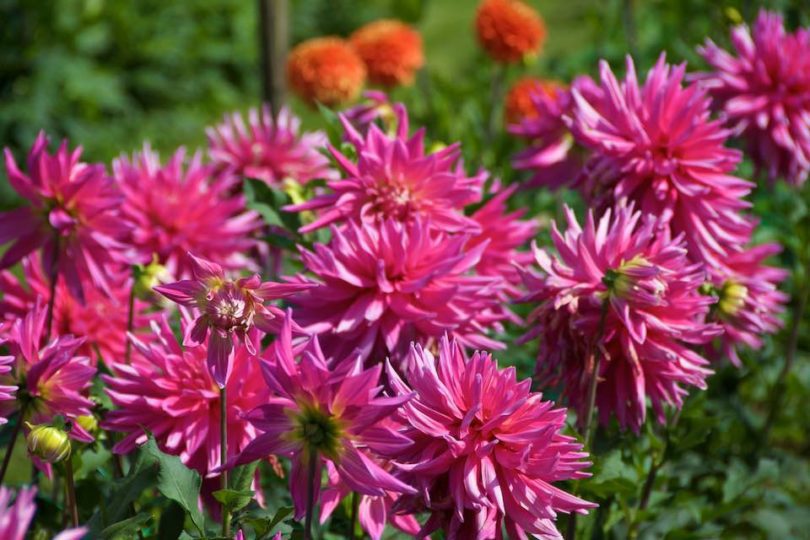
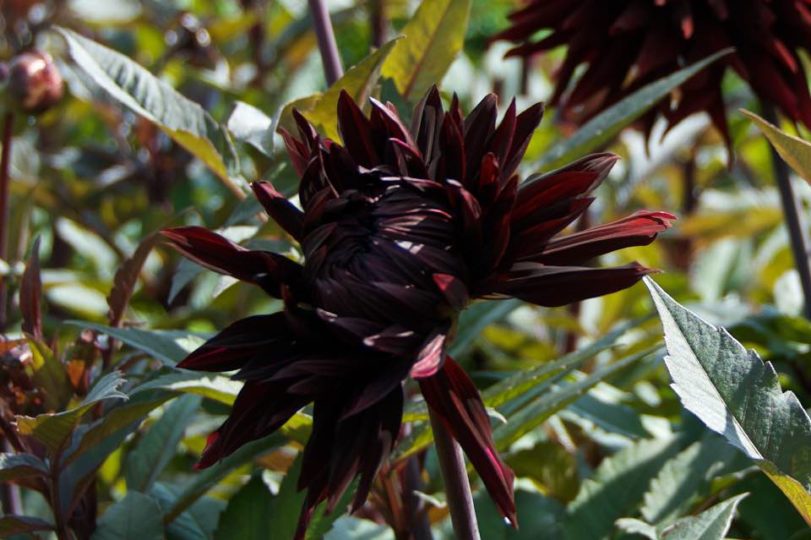
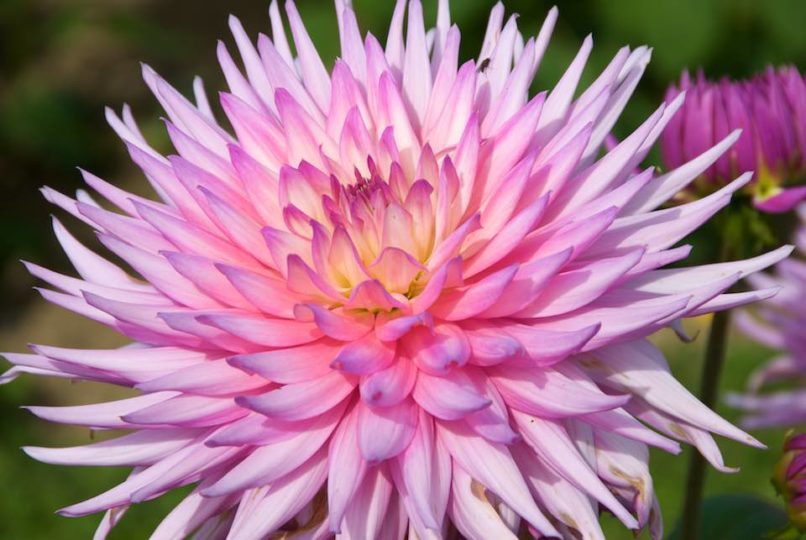

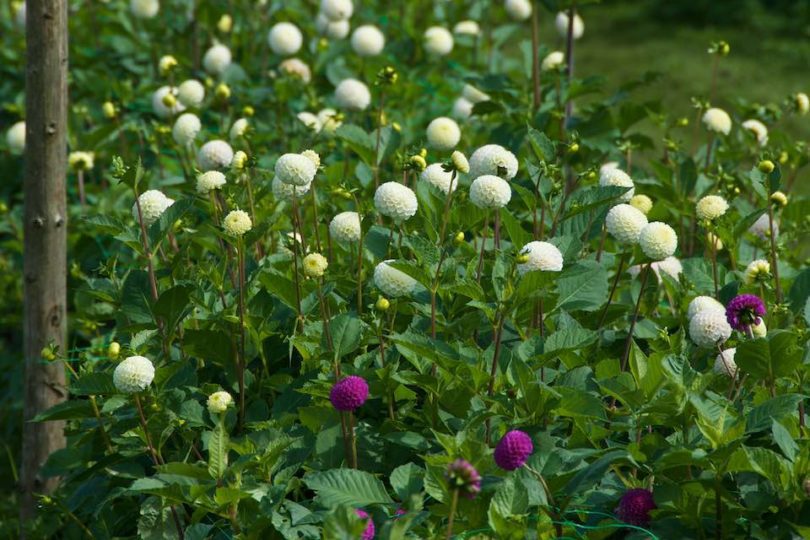
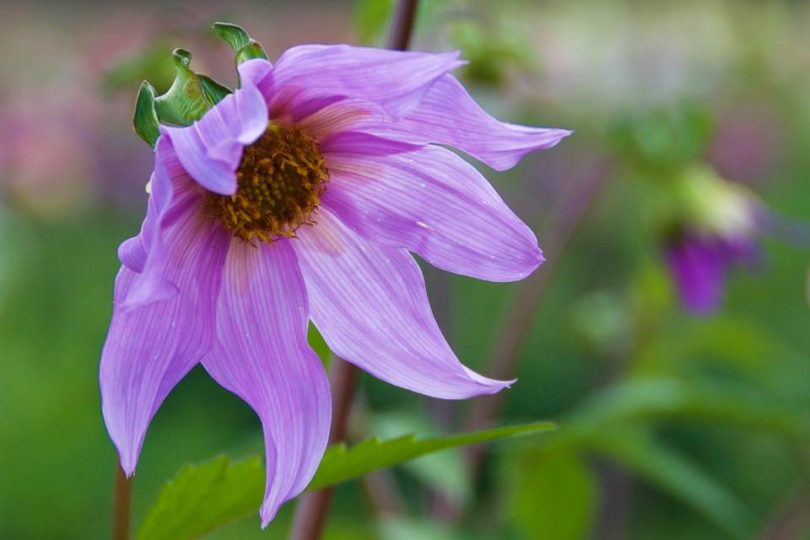
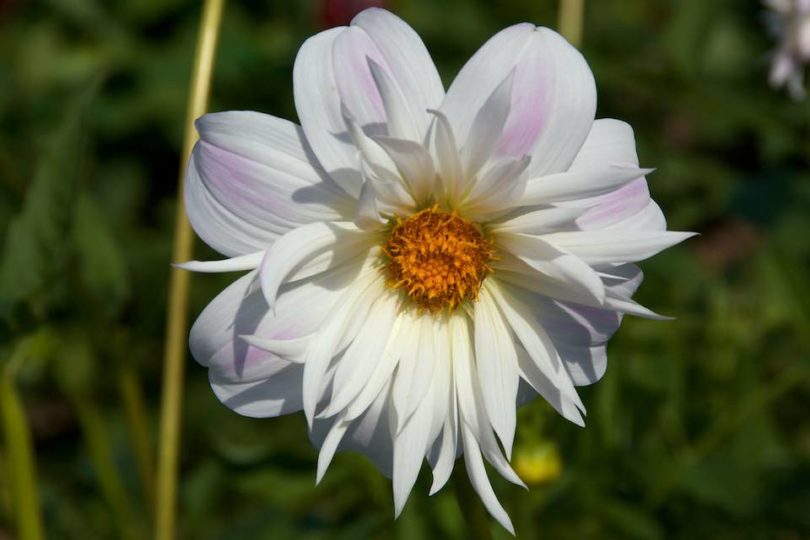




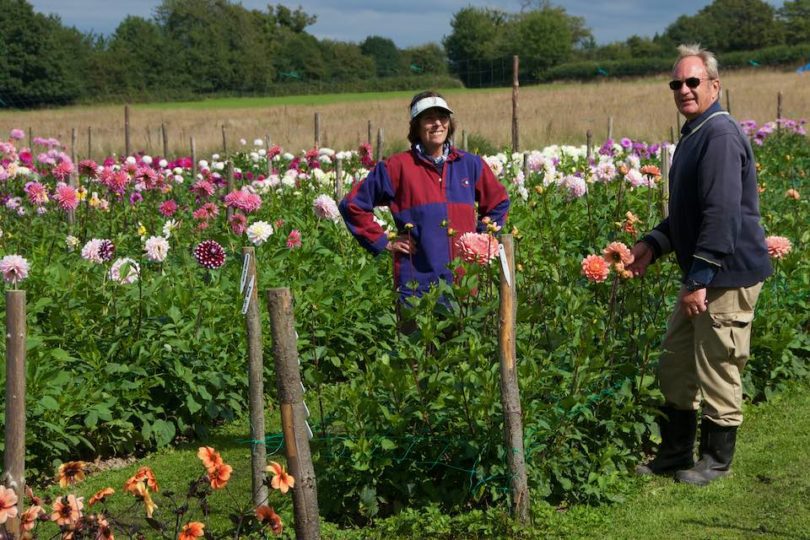
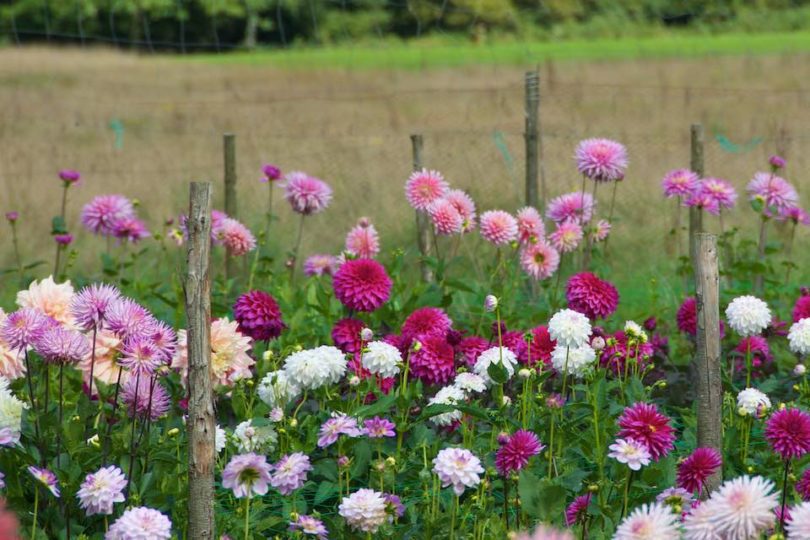

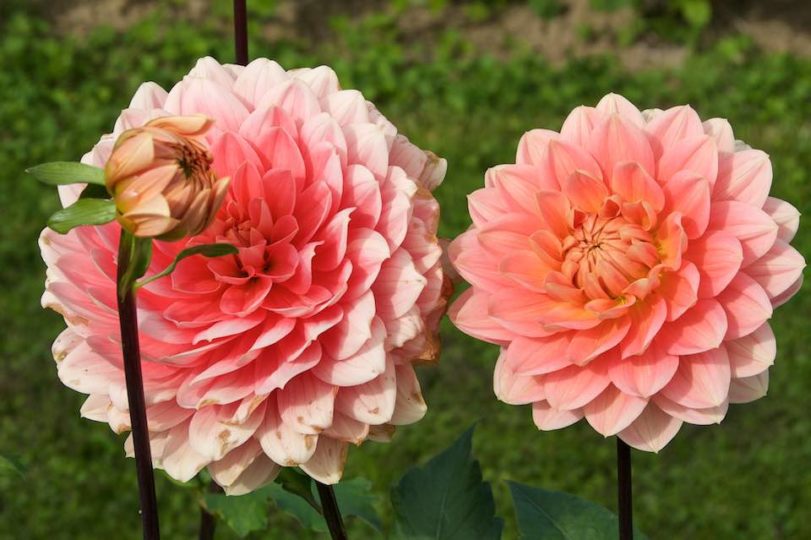
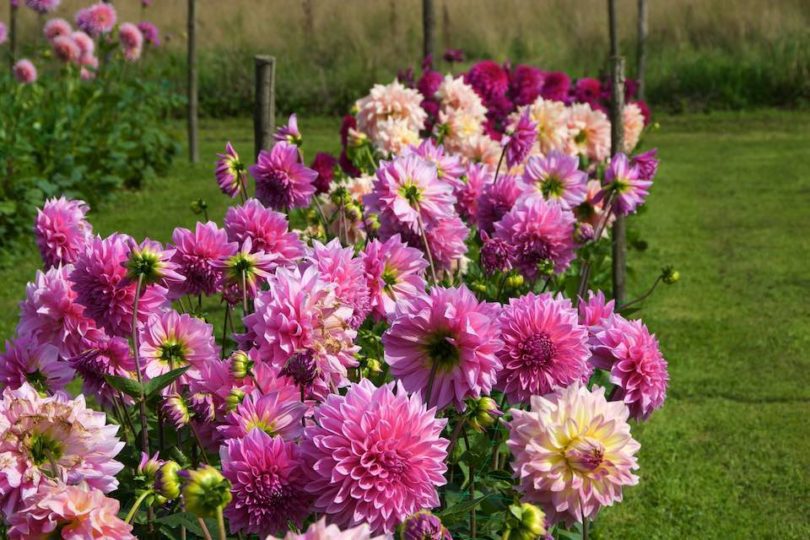

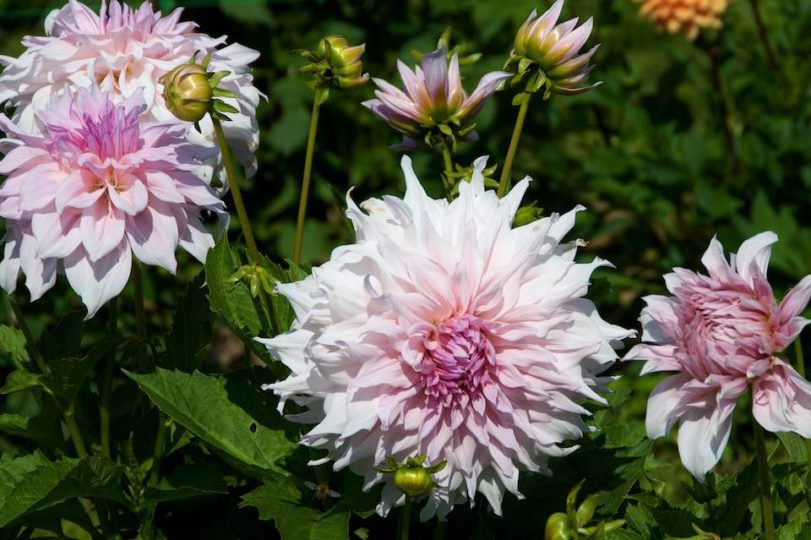
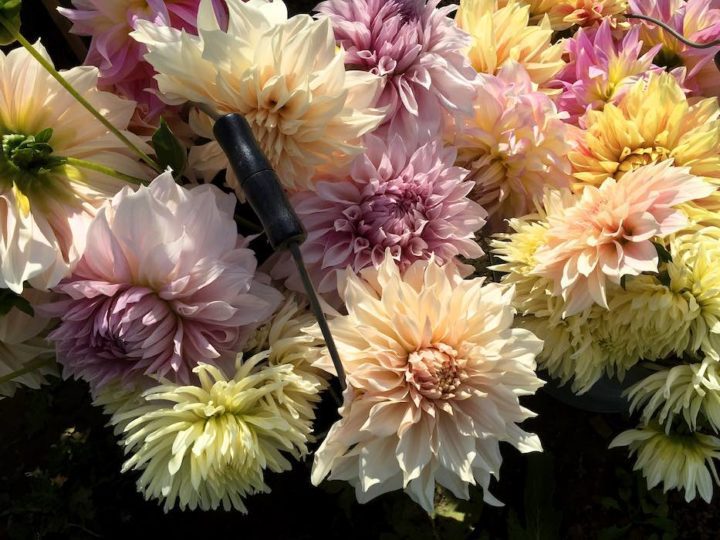
Grow like a pro
Armed with a hot cup of tea and a delicious custard cream, the Ramsey’s generously shared their trade secrets, as they led me around their extraordinarily beautiful flower farm.
Market quality
Incredibly, the Ramsey’s grow all their blooms from cuttings, not tubers. Very much like tulips, all the plants are lifted every year and replaced with fresh plants generated from one year old tuber cuttings. According to Richard, when grown from a cutting, the size and quality of the flower is superior, which for a flower farmer is obviously crucial. Sensing my dubious expression, the good man showed me the proof growing side by side. The difference in growth, habit and flower size was quite incredible. Plants generated from cuttings were much taller (approx 20%+), seemed (even) healthier than their older cousins, and the flowers indeed superior1.
Now, we needn’t panic, as tubers are of course perfectly capable of producing very good flowers. Even though, the blooms are smaller, and according to Richard lack colour clarity, tuber generated blooms are still very beautiful indeed, and worth growing. Even if I’m looking for top blooms for the cutting patch, Covent garden quality isn’t required, so I will stick with my tubers. Every year though, a few cuttings will be added to improve the stock.
Longer stems
With flowers that currently only just peek out above the vase, growing dahlias on longer stems is high on my agenda. For longer stems, one has to do the following;
- Firstly, there’s the crucial practice of ‘Stopping‘. When the plant has grown about five pairs of leaves, carefully pinch out the growing tip just above the fourth pair of leaves, to encourage a bushier plant.
- Remove (take a deep breath) all buds that appear before July.
- From mid July, take another deep breath and prepare to disbud fiercely. Retain only the terminal bud, and remove side shoots down from the top two leaf axils, with any additional buds2. Disbudding will not inhibit ultimate flowering, instead it will encourage growths to break out of lower joints on the stem. For secondary flowers, Richard advises to disbud as described, that is down to two leaf axils, after which you leave at least one leaf axil to produce two further secondary flowering stems of good length. Disbudding will pay off, as the resulting flower will have impressively longer, and sturdier stems. Though, a word of caution, the stems will grow thicker which for some may prove more difficult to work with when (delicate) flower arranging.
Audrey II
It’s no secret, dahlias are hungry creatures. When planting out, make sure plenty of good quality compost is incorporated in the soil. After which, feed in June, July and August with either a liquid feed (comfrey tea, or liquid seaweed) every fortnight, or alternatively incorporating Fish, Blood & Bone into the soil. Seaweed meal works very well too. From September onwards, to strengthen the tubers switch to a potash based feed, such as bonemeal.
Wapsies galore
These floral puppies are not for the faint hearted. Everything seems to want to eat some part of the dahlia right through the seasons. The slugs have a field day when they’re young plants, so keep an eye out for those in spring. Though, I have noted that even the most slug-marred of plants, can eventually recuperate.
Post slug wars, the aphids, caterpillars, thrips and red spider advance. I’m just vigilant, and remove pests when they appear, as I’m not keen using chemicals. Making sure the plants have enough room, plenty of air circulation etc, does help too. The latter, should also limit, fungal diseases3 which unfortunately dahlias are prone too as well.
The worst though are wasps, with their insatiable appetite for juicy dahlias stems. Large huddles of wasps, fiercely strip off the outer cuticle of the stems, to get to the sweet sugar laden sap produced by the plant. Apart from setting traps there really is little one can do, especially for those like yours truly, whom are rather susceptible to their sting. Annoyingly too, they tend to seek out the most prized of my dahlias; the Cafe au Lait and Shiloh Noel. Again though, despite the initial panic, they do move on eventually and the plants have recovered, be it at the cost of a branch is some cases.
Having survived all that, the onslaught of the earwigs is easier to deal with. Earwigs tend to nestle in and amongst the lovely flowers, and rudely eat their hosts prized petals. You can trap them, but I just don’t want to deal with the trappings the next day. When cutting, I give the flowers a good shake and out they will fall. The odd one does appear at inopportune times, such as during dinner parties but swift squash action deals with that very nicely.
Cutting & vase life
Come August and September all the hard work is rewarded, and incredibly there is no stopping the plant’s generosity. My own cutting patch on the allotment, hosts about 16 plants, from which I cut two (over) full buckets every other day. According to the Richard, to ensure optimum vase life, one must do the following;
- Cut early morning or early evening when the stems are fully turgid
- Cut straight into water
- Ramsey advises to cut dahlias with a knife not secateurs. According to the good man, cutting with secateurs squashes the capillaries making it difficult for the flower to take up water effectively. Despite the expert demonstration, I have little faith in my personal kamikaze knife wielding skills, so for the time being I’ll stick to ye oldie faithful secateurs. Hopefully they’re sharp enough to appease Richard….
- Leave the dahlias in a cold, dark place in plenty of water to condition, ideally overnight.
- Cut the conditioned flowers again, into hot water to ensure the capillaries are free of air. Eh voila, ready to go.
- As for vase life, Ramsey recommends proper vase hygiene. Ensure the vase is clean to start with and refresh the water daily/every other day.
Dahlia inspiration
Incredibly, there was a time dahlias were as popular chez nous as a pot of Marmite for a French man. Once rudely, and admittedly ignorantly disregarded as a ‘pensioner’s plant’, I have now come full circle. Dahlias are a superb cut flower I wouldn’t be without. My current favourites are the soft pastel coloured, large varieties such as Cafe au Lait, Shiloh Noelle, Ice cube and a huge plate variety spotted at Withypitts called Lavender Perfection. Mind you, there’s Thomas A. Edison, Black Jack, Dahlia Australis, and I quite fancy some of those smaller pom pom varieties. Endless options for new favourites.
If just like me you needed a nudge towards dahlias, a visit to Withypitts is highly recommended. Open days are organised during the height of the season, and the sight of all that colour at the farm is simply incredible. In addition, there are some great blogs and websites out there, whom have inspired yours truly to take the dahlia plunge. Credit is owed to Sarah Raven, who has always had a great eye for texture and colour; British Flower Week at Covent garden for their modern take on (traditional) flowers; all our talented British artisan florists whom generously share images of their dahlia bouquets on social media (a.o.; @cutflowergrower, @FloralCircus, @Babylon_Flowers, @GandGorgeous, @TheFlowerFarmer,….), and abroad, inspiring flower farmers such as Erin Benzakein of @FloretFlwrFarm in the US, who has an incredible eye for all things flowers.
Have a go. You won’t regret it….
- A man of detail, Richard added that there are some exceptions to this rule. Dahlia Aljo, for example is an exception as most plants growing from tubers will be taller and bushier.
- Disbudding is probably only most relevant if you’re growing cut flowers. If colour in a border is the aim of the game, you don’t need to disbud.
- Powdery mildew, Botrytis, Sclerotinia and Dahlia Smut.
